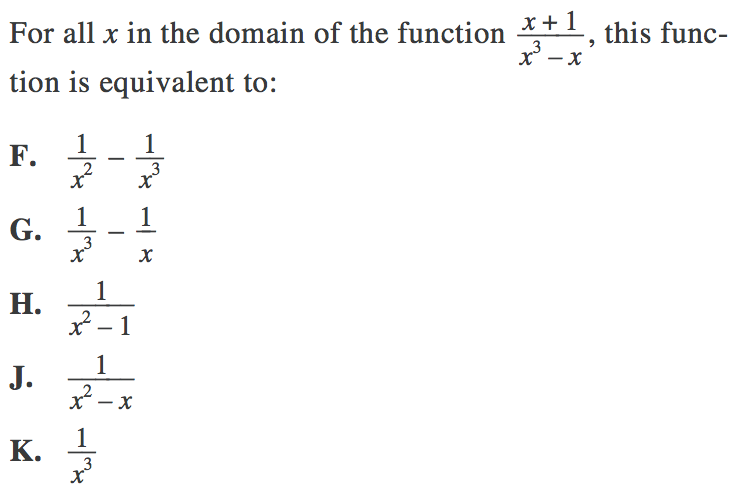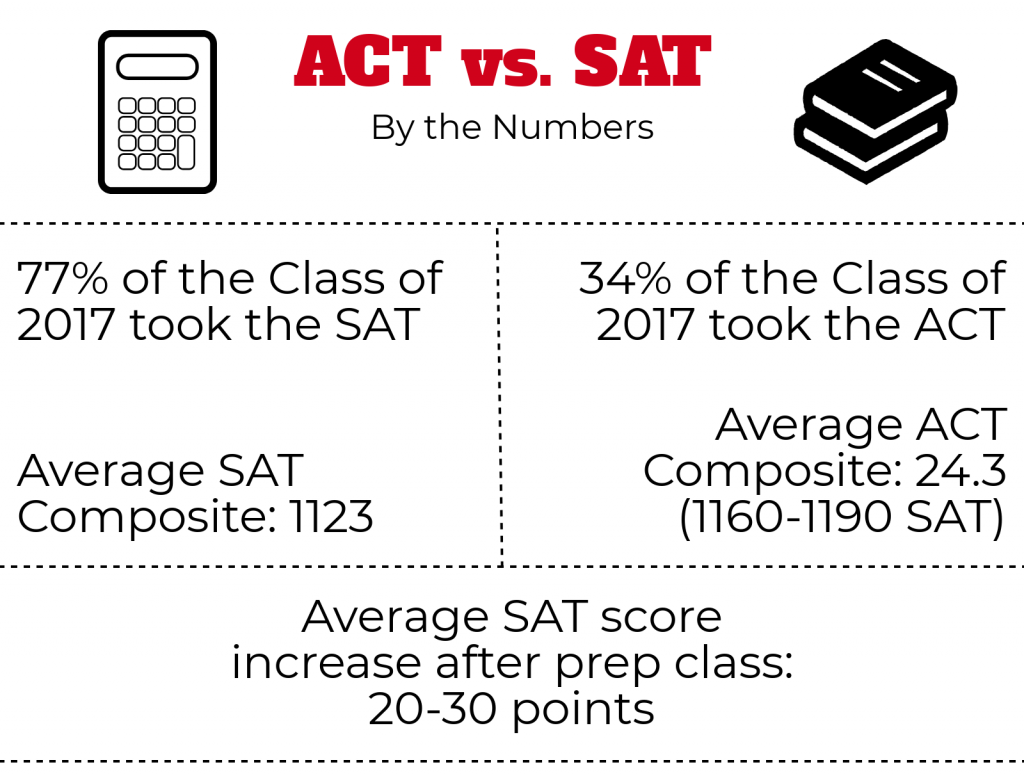by Clement Doucette
For students residing in the East and West Coasts of the United States, sitting for the SAT is an integral part of the college applications process. Many take the College Board’s trademark exam multiple times and enroll in prep classes with the hopes of obtaining the best score. Meanwhile, these students’ Midwestern counterparts prepped for the ACT, the College Board exam’s chief competitor.
For many years, this testing breakdown occurred along geographic lines and still does. The Massachusetts Department of Education does not report average ACT scores at high schools as it does with SAT scores. However, recent statistics have shown that these boundaries are breaking down. In 2012, the Washington Post reported that for the first time, the number of students who took the ACT college admissions test outnumbered those who took the SAT. In the following years, the number of ACT test takers increased rapidly.
Hudson High School does not seem to have gotten this memo. School counselors still extensively promote the SAT. HHS does not offer ACT sittings, making it difficult for students to take the test. They must travel to either Marlborough High School or Algonquin Regional High School, a challenge for students who lack reliable transportation. HHS also offers an SAT prep class while completely ignoring prep for the ACT.
Rather than promoting one test, students should be encouraged to take the test that best fits their learning and test taking styles. While many will say that the two standardized tests are similar, their content and structure varies. Encouraging students to take one test while ignoring other options is not ideal.
English teacher Jennifer Wallingford has been teaching an SAT prep class for twenty years. Over the years, the format and types of test questions have changed, making it more challenging to teach test-taking strategies.
“The test has changed maybe two or three times since I’ve been teaching the course,” said Wallingford. “Back in the day we used to have to help people with analogies. That was awesome, and I miss it. The analogies were like riddles that you had to solve. They were these little discrete problems that, dare I say, were fun to go over with everybody. But now, everything is passage based.”
Contrary to the former analogy-based questions, a student cannot use one surefire strategy to answer the new passage-based questions. While the lack of a surefire strategy may be a downside, the new questions require students to use “real world” skills that they would use in a standard high school English class.
“The newest version of the test asks new questions about where evidence was located for the answer to the previous question,” said Wallingford. “There’s no fun way to teach that. It was a little more entertaining, believe it or not, to teach the skills and strategies. Now, students really just read a passage, paraphrase what is in the passage, and determine where they are finding the evidence.”
Still, the SAT poses a significant challenge when compared to the MCAS, the state standardized test that affords test takers an unlimited amount of time. Although the content of the SAT has changed, cultivating time management skills remains a crucial lesson taught in the prep class. The new, evidence-oriented questions make time management more challenging. Test takers must read five passages and answer fifty-two questions in sixty-five minutes.
“Most of my information has to do with specific uses of time and how to use time wisely,” said Wallingford. “So, skills like skimming a passage rather than reading it carefully or ignoring answer choices and spending more time back in the text. We practice reading and thinking the way they might not be in their classes and that they didn’t have to for the MCAS.”
The format of the SAT may not be ideal for all students, despite the efforts of prep programs. While the ACT presents similar time management problems, the SAT has been known to include questions that could trip up some, especially in the math section. It presents conceptually simple problems in a complex or convoluted manner. A student with strong computational skills could still struggle with the math section, which now requires critical thinking ability that students can hone through prep classes and practice.

In general, the SAT is more math-heavy than the ACT. There are two sections of math; one that allows students to use a calculator and one that does not. The ACT includes one hour-long math section with sixty questions that permits test takers to use a calculator. For students who excel in reading and English, the ACT may be the better test. It includes two English-based sections and the science section, which tests students’ critical reading abilities. Still, many students fail to take the ACT even though their scores could be stronger.
According to 2017 data presented in the Hudson High School profile, only 34% of students sat for the ACT, compared with the 77% of students who sat for the SAT. Many students may be lacking the potential benefits of taking both tests, or taking the test that best suits the students. Additionally, this report showed slightly higher scores for ACT takers when compared to SAT takers. SAT takers earned, on average, a composite score of 1123. ACT takers scored an average of 24.3. When converted to match the SAT scale, the average ACT score is an 1160-1190.
While the school does not keep official data on score improvements from the prep class, counselor Angie Flynn noted that students who took the class improved their scores by roughly 20-30 points after a pre-course pretest. While the prep course has benefits for students taking the SAT, taking the ACT may be another option for students to improve their scores.
Senior Paige Mega took both the SAT and the ACT. Although she did not take the school-offered prep class, she scored higher on the ACT. Prior to a meeting with guidance, Mega did not know that the ACT was an option.
“I think the SAT was definitely pushed more because there was the prep class,” said Mega. “I know personally that I researched the ACT myself. I went with other people to the testing site and we carpooled, and they didn’t even know there was a science part or an essay part.”
While students should still be aware of the contents of the test, part of this problem may be attributable to the promotion of the SAT over the ACT. The College Board still reigns supreme in Massachusetts and the East Coast where the majority of students take the SAT. These geographic boundaries are restrictive and keep students from exploring ACT testing options. Mega described the ACT’s science section as a factor that boosted her score.
“I’m going into a science field, so it helps to have the science component to raise my score,” said Mega. “I think people don’t realize that that’s a component of the ACT, even though it might benefit them. I also think the math was somewhat easier. I think if science is your strong suit, you should definitely take it, and maybe if math isn’t your strong suit, you should also take the ACT.”
Still, these benefits may stay unknown to many students. The ACT is infrequently discussed in school presentations, and test takers do not have the advantage of a school-offered prep class.
“I think that guidance could present both as an option,” said Mega. They could maybe offer a prep course for the ACT or a general standardized test prep course that helps you with both instead of just the SAT.”
Running a joint SAT and ACT prep class could teach students skills for taking both tests. Both tests require students to use skills such as time management, efficient reading, and locating evidence in passages. Wallingford noted that the two tests are becoming more and more alike.
“I think the new SAT is trying to be more like the ACT,” said Wallingford. “My understanding is that some of the SAT questions are a little more interpretive, which is what I saw with the ACT. The ACT also includes a science section, and the SAT made sure that they put two science passages in the reading section. The SAT doesn’t penalize for the wrong answers the way that they used to, which the ACT never did.”
By teaching skills that are applicable to both tests, students could determine which test is ideal for their test taking style and academic strengths. Students who have strong science and reading skills could be encouraged to take the ACT first, as a result of its inclusion of a science section. In general, the ACT is more reading-heavy and lacks the two math sections found in the SAT. On the other hand, students with strong math skills would likely excel when taking the test’s two math sections.
While both tests are equally difficult in their own way, it is imperative that students are aware of their options. The impersonal process of standardized testing could be personalized if counselors discuss options with students and work to determine the ideal testing strategy. Expansion of the pre-existing prep course could bring prep benefits to students who wish to take the SAT.
The choice of standardized tests should not be based on arbitrary factors such as geography or testing site locations.



















Pamela Porter • Jun 7, 2018 at 2:08 pm
They did take acuplacer at HHS this year.
Love the idea mentioned in the article about creating prep class that covers both.
It reminds me a lot of the discussion post-college on Millers v. GRE tests. Also, students need more exposure with timed assessments. Between unlimited time for MCAS and teacher accommodations, I have been noticing the many students are struggling with the time requirements when I proctor SATs. Interesting read, thanks!